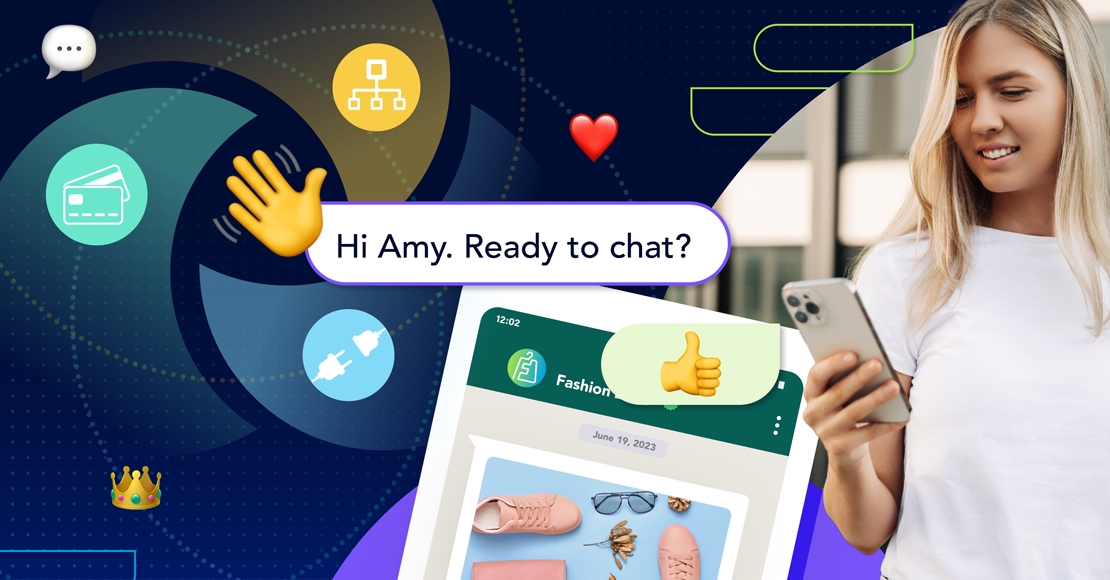
How businesses can drive customer engagement
Understanding your customers is critical to growing your business. And successful entrepreneurs agree that customer engagement fuels growth.
“As an entrepreneur, your target audience is the lifeblood of your business, and it will not succeed if you don’t know them,” shares business storytelling expert Allie Decker.
But, what if you're running marketing for a start-up? On a budget? Customer engagement doesn't come cheap. Companies across the world are pouring billions of dollars into market research. A focus group could cost you up to $6 000.
Let’s unpack a few ways to get to know your ideal customers so that you can provide value propositions that solve their problems.
Data mining on Amazon
Amazon's annual retail sales are over $200m in the USA alone. That is 49% of America’s total retail spend. That's a lot of revenue, but it's also a lot of data, and you can use Amazon to drive a customer engagement strategy with minimal budget/spend.
Look at the best-selling books, for example, and examine the title, subheading, and descriptions. These will tell you more about the services and promises people are searching for.
In this piece for Conversion XL, Jennifer Havice breaks down how you'd parse through Amazon product and book reviews to step inside your customer's mind in order to write compelling ad copy. You can use the same system to pitch directly to your clients.
Havice suggests paying close attention to:
phrases that speak to the reviewers’ wants and needs
phrases that tap into the customers’ concerns and pain points
Next, copy your findings into a Google Doc. Study the copy and pull out recurring themes. Now you can go to your customers with the right value propositions.
JotForm founder Aytekin Tank discusses how Slack built a multi-billion dollar company by defining its "true value".
In 2013, Slack CEO Stewart Butterfield outlined his vision for the team collaboration tool weeks before its release. Notice how Butterfield doesn't focus on product features, but on the transformation that it promises.
"We’re selling a reduction in informational overload, relief from stress, and a new ability to extract the enormous value of hitherto useless corporate archives. We’re selling better organizations, better teams."
Consider what type of transformation you're selling.
Ship it when it's good enough
Legend has it that the team at Google were demonstrating their AJAX-powered map solution to the internet giant's bosses. The team was happy with its prototype but wanted more time. Larry and Sergey, according to Silicon Valley folklore, said: "It is already good enough. Ship it."
That's according to this piece by Eric Ries:
"The team complied, despite their reservations and fear. And the rest is history: Google Maps was a huge success. This success was aided by the fact that it did just one thing extremely well – its lack of extra features emphasized its differentiation. Shipping sooner accentuated this difference, and it took competitors a long time to catch up."
Joel Gascoigne, the founder of Buffer, conveys a similar experience:
“After the first paying customer, I took a step back, acknowledged that as a major milestone and decided a slight shift in focus was required. As a developer, it is easy to pile in more features at that point. I knew it was time to focus on marketing and further customer development...This has been a valuable lesson I want to take forward: when the signal is there that the product is good enough, shout about it!”
The concept is a component of the lean startup methodology, premised on a "build-measure-learn feedback loop".
The idea is simple:
Build a minimum viable product (MVP) that solves the problem
Begin the process of "validated learning"
Adapt your plans "incrementally, inch by inch, minute by minute"
Ben Kaye, in a Vision Critical post, says this form of customer engagement will "help prioritize what features to build and will distinguish focused, practical, and actionable ideas".
Surveys are great but sometimes they're all lies
Surveys can help your business grow, but they can also be a waste of time. We lie, we forget… or, we're just trying to be nice. But there are ways to possibly correct these quirks by adjusting your survey design by incorporating Joshua Lisec, a best-selling ghostwriter and TEDx speaker’s, recommendations for framing questions around the customer journey.
Here's a summary of Lisec's approach:
Awareness stage
Before you knew about us, what did you do to obtain the service you're seeking? Was there anything you didn’t like about that solution?
Consideration stage
What was the hardest part about finding the right solution? What frustrated you about the search? When you first started investigating, what were must-haves? Did you notice any red flags?
Action stage
Fill in the blank, “I chose your company because ___.”
The good news is that, if you’re on a budget, there are services that will enable you to source feedback cheaply.
Crowd Insight by Gadget Flow puts your product in front of buyers for feedback on the product page. Here's a sample report.
Customer-centric marketing
Customer engagement doesn't come to a halt once you're in business. Neil Patel, recognized as one of the most influential entrepreneurs and online marketers, confirms that you need a "customer-centric" marketing campaign.
"Putting your customers’ needs first can help improve relationships with your audience and retain customers. This is because customers like to feel like they’re being given special treatment... 90% of consumers found personalization appealing, while 80% said they’d be more likely to do business with a company that offers personalized approaches."
The idea here is to listen to your customers all the time. Thanks to the internet, not only can you listen and learn, but you can help solve customer problems.
Use tools like Mention and Hootsuite to monitor relevant terms for your industry and brand.
Customer engagement doesn't have to be complicated or costly, for that matter. It's as simple as an ongoing two-way exchange between you and your customers.
If you want to measure how your customer engagement stacks up against industry trends, read our recent article on the factors shaping customer experience.
Explore other articles
Step into the future of business messaging.
SMS and two-way channels, automation, call center integration, payments - do it all with Clickatell's Chat Commerce platform.








